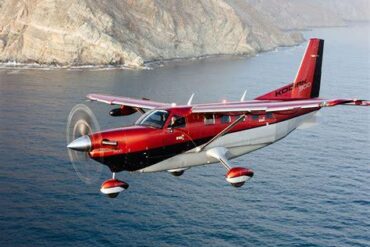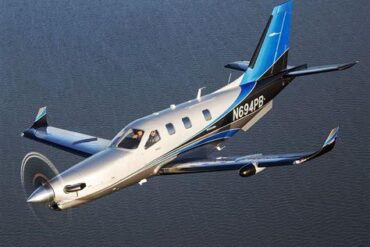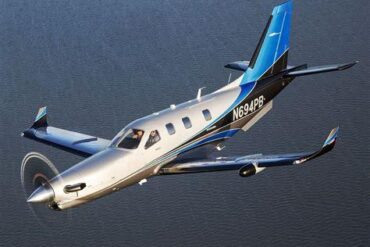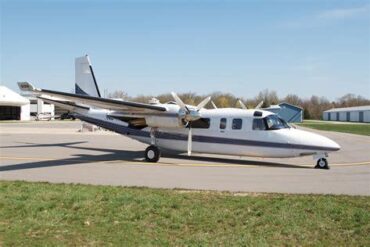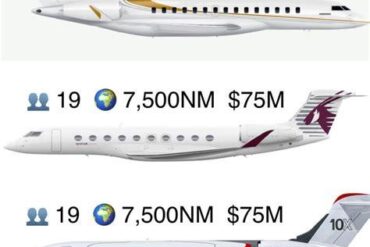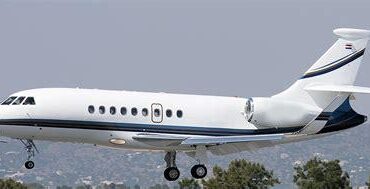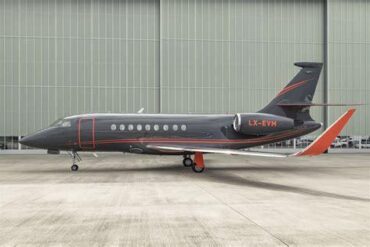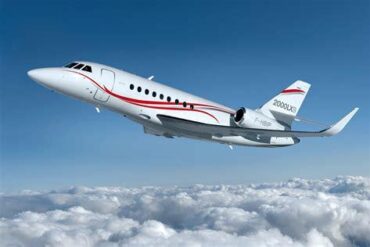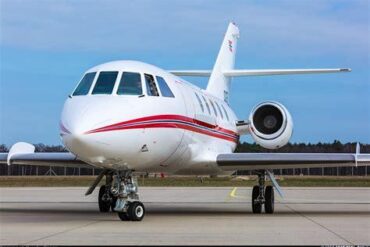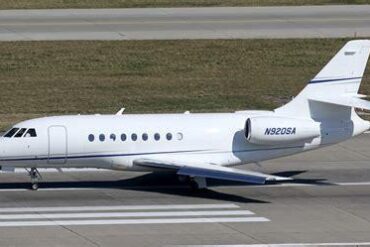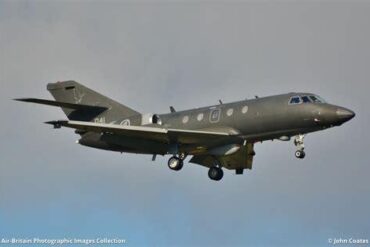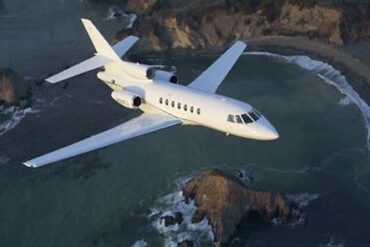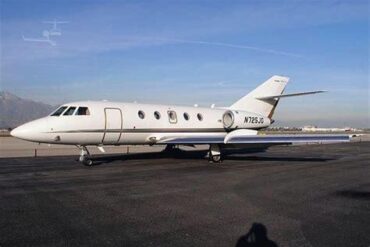The Dassault Falcon 900 is a remarkable business jet that has earned a reputation for its performance, comfort, and efficiency. This article will delve into the price, operating costs, and overall value of owning and operating a Falcon 900, providing potential buyers and operators with comprehensive insights.
Overview of the Dassault Falcon 900
The Dassault Falcon 900 is a trijet designed for medium to long-range travel, accommodating up to 14 passengers comfortably. Its spacious cabin is equipped with high-end amenities, ensuring a luxurious travel experience. The aircraft is powered by three Honeywell TFE731-5BR engines, enabling it to operate efficiently at various altitudes and in diverse weather conditions. The Falcon 900 stands out due to its advanced avionics and safety features, making it a preferred choice among corporate travelers and charter operators.
Initial Purchase Price
When considering the price of a Dassault Falcon 900, several factors come into play. The purchase price can vary significantly based on the aircraft’s age, condition, and installed features. On average, a pre-owned Falcon 900 can be acquired for approximately $3 million to $8 million, depending on these factors. Newer models or those with extensive customizations can command prices at the higher end of this spectrum.
Factors Influencing the Purchase Price
-
Age of the Aircraft: Older models generally cost less than newer ones, but they may require more maintenance and upgrades.
-
Customization and Features: Tailored interiors, advanced technology, and upgraded systems can increase the price significantly.
-
Maintenance History: A well-documented maintenance history can enhance the resale value of the aircraft.
-
Market Demand: Economic conditions and demand for business jets can influence pricing trends.
Operating Costs Overview
Understanding the operating costs associated with the Falcon 900 is crucial for potential owners. These costs encompass several areas, including fuel, maintenance, insurance, crew salaries, and hangar fees. Below, we break down these expenses in detail.
1. Fuel Costs
Fuel is one of the largest ongoing expenses for any aircraft. The Falcon 900 has a maximum range of approximately 4,750 nautical miles and operates efficiently on Jet A fuel. The fuel consumption rate for the Falcon 900 is about 200 gallons per hour. Given the current average price of Jet A fuel, which fluctuates around $5 per gallon, the estimated fuel cost per flight hour is around $1,000.
2. Maintenance Costs
Regular maintenance is essential for ensuring the aircraft remains in optimal condition. The Falcon 900 requires scheduled inspections, which can be categorized into:
-
A Checks: Performed every 400 flight hours or annually, costing approximately $15,000.
-
B Checks: Conducted every 800 flight hours, averaging $25,000.
-
C Checks: Major inspections performed every 4,000 flight hours, costing about $150,000.
In addition to scheduled maintenance, unscheduled repairs can arise, contributing to an average annual maintenance cost ranging between $200,000 to $300,000.
3. Crew Salaries
Employing a skilled crew is necessary for safe and efficient operation. The typical crew for the Falcon 900 includes a captain and co-pilot. Salary ranges can vary based on experience and location:
-
Captain: Approximately $120,000 to $180,000 per year.
-
Co-Pilot: Approximately $60,000 to $100,000 per year.
Therefore, the total annual salary for the crew can range from $180,000 to $280,000.
4. Insurance Costs
Insurance is a significant aspect of operating a business jet. The insurance costs for a Falcon 900 can range from $20,000 to $50,000 annually, depending on factors such as the owner’s experience, the aircraft’s value, and coverage options chosen.
5. Hangar Fees
Hangar fees can vary widely based on location. In major metropolitan areas, these fees can be substantial. On average, hangar costs can range from $1,500 to $3,500 per month, leading to an annual expense of $18,000 to $42,000.
Total Annual Operating Costs
By aggregating the above costs, we can estimate the total annual operating costs for a Dassault Falcon 900. Here’s a breakdown:
-
Fuel: $1,000/hour x 400 hours = $400,000
-
Maintenance: $200,000 to $300,000
-
Crew Salaries: $180,000 to $280,000
-
Insurance: $20,000 to $50,000
-
Hangar Fees: $18,000 to $42,000
Estimated Total: $818,000 to $1,072,000 annually.
Cost-Effective Operations
To optimize operating costs, Falcon 900 owners can implement several strategies:
-
Flight Planning: Utilizing advanced flight planning tools can enhance route efficiency, reducing fuel consumption.
-
Maintenance Programs: Engaging in structured maintenance programs can help prevent costly unscheduled repairs.
-
Operational Efficiency: Training crews on fuel-efficient flying techniques can contribute to lowering overall fuel costs.
Resale Value
The resale value of a Dassault Falcon 900 can be influenced by various factors, including market demand, aircraft condition, and maintenance history. Typically, a well-maintained Falcon 900 can retain approximately 50% to 70% of its original purchase price after five years, making it a relatively sound investment in the business aviation sector.
Conclusion
The Dassault Falcon 900 offers an impressive blend of luxury, performance, and operational efficiency, making it a prime choice for discerning travelers and businesses alike. While the initial purchase price and operating costs may seem substantial, careful management and strategic planning can yield significant returns in comfort and productivity. Whether considering the purchase of a new or pre-owned Falcon 900, understanding these financial aspects is crucial for maximizing the value of this exceptional aircraft.

